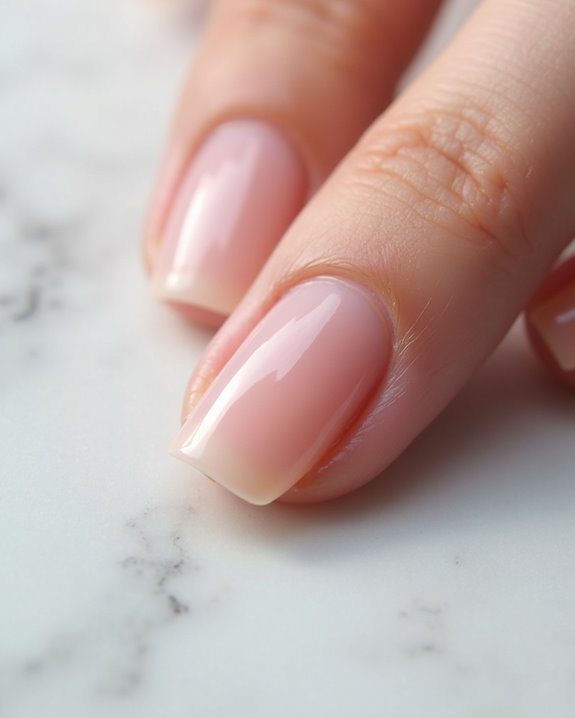A nail drill isn’t necessary for basic manicures on healthy natural nails. While professionals benefit from time savings (15-30 minutes per set) when working with acrylics or gels at speeds up to 35,000 RPM, these tools pose risks including nail thinning and respiratory hazards from dust particles. Manual filing offers better control and reduces damage potential, particularly for thin or brittle nails. Those performing advanced nail services may justify the investment, while beginners should master traditional techniques first. Deeper examination reveals important safety and technique considerations.
Key Takeaways
- Nail drills aren’t necessary for basic natural nail manicures but significantly reduce time for acrylic or gel services by 15-30 minutes.
- Professional drills with 7,000-35,000 RPM settings excel at removing gel polish and acrylics more efficiently than manual filing.
- Improper drill technique risks thinning natural nails and generates potentially harmful dust particles containing acrylates.
- Manual filing offers better control and reduces damage risk, making it preferable for natural, thin, or brittle nails.
- Beginners should prioritize learning proper hand filing before investing in a drill that requires specialized training.
What Is a Nail Drill and How Does It Work?
A nail drill, an electric tool essential to modern nail care, functions as a specialized rotating device designed specifically for manicure and pedicure procedures. This electric nail drill operates by utilizing interchangeable drill bits that rotate at variable speeds, typically ranging from 7,000 to 35,000 RPM, allowing technicians to precisely shape, file, and smooth both natural and artificial nails.
The functionality of a nail drill depends on its motor, which generates torque (measured in N.cm) to provide sufficient rotational force for efficient material removal. When using a nail drill, operators select appropriate bits based on the task—carbide or diamond-coated attachments in various shapes facilitate different functions from bulk reduction to detailed cuticle work. Adjustable speed settings guarantee safe operation, requiring practitioners to maintain light pressure and continuous motion to prevent nail damage.
Furthermore, many nail drills feature a 6000mAh battery that offers 10-14 hours of cordless use after a 2.5-hour charge, enhancing portability for both professional and at-home applications.
The Time-Saving Benefits of Using Nail Drills
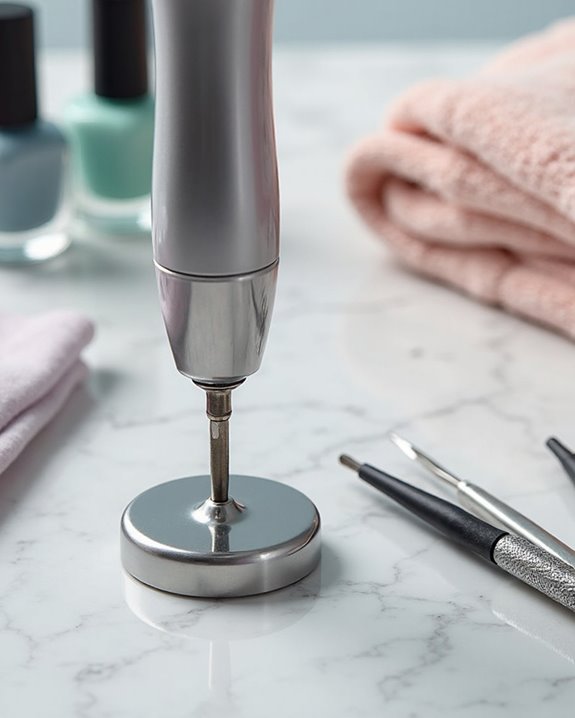
When considering efficiency in nail care, electric nail drills stand out as significant time-savers compared to traditional manual filing methods. A quality nail drill machine can reduce service time by 15-30 minutes per sculptured nail set, streamlining the entire manicure process through faster shaping and filing capabilities.
Electric nail drills particularly excel at labor-intensive tasks, such as removing gel polish or acrylics, which would otherwise require extensive manual effort. With speeds reaching up to 35,000 RPM, these devices cut through materials quickly and efficiently. Using an electric file also benefits technicians by minimizing repetitive hand motions during fills and regular maintenance procedures, making nail services more time-efficient overall. This advantage extends to clients with conditions like arthritis, who benefit from the shorter appointment times that drills enable.
For optimal performance, models like the MelodySusie SC320H offer up to 30,000 RPM, enhancing gel removal efficiency with minimal heat and vibration.
When Nail Drills Shine: Advanced Nail Services

Electric nail drills truly revolutionize professional manicure services by enabling technicians to perform advanced nail techniques with remarkable precision and efficiency. For acrylic and gel enhancements, the right nail drill can save 15-30 minutes per set while delivering professional-quality results. Nail techs particularly benefit when executing intricate nail art, such as French tips, using specialized bits for safe and effective application.
MelodySusies nail drill products, offering up to 35,000 RPM and 20 N.cm torque, excel in hard gel removal and precision cuticle work. Football bits prove invaluable for cleaning under long nails and reducing white lines with salon-level accuracy. For clients with dexterity limitations like arthritis, drills streamline maintenance procedures, making advanced services more accessible while maintaining impeccable standards that manual filing cannot efficiently achieve.
For even greater versatility, the SC320H model provides up to 30,000 RPM and a 10-14 hour battery life for seamless, extended professional sessions.
Potential Risks and Drawbacks of Electric Filing
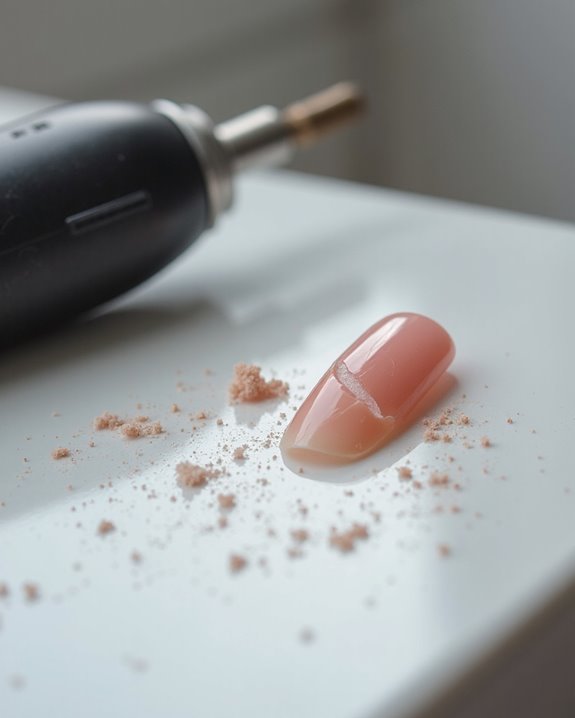
Despite their efficiency benefits, nail drills introduce several concerning health and safety risks that require careful consideration before implementation. When used improperly, drills on natural nails can cause damage, leading to thinning and peeling of the nail plate. Applying too much pressure or using high-speed settings weakens the nail structure, potentially resulting in long-term damage to your nails and sensitive nail bed tissues.
The fine dust particles generated during electric filing contain harmful acrylates, creating respiratory hazards for both technicians and clients. Unfortunately, few professionals consistently wear a mask when using electric equipment, increasing exposure to these hazardous particles. Additionally, improper bit selection or technique can cause pain, burns, and injuries, especially when coarse or metal bits are used without proper training or control.
Manual Filing: A Gentler Alternative
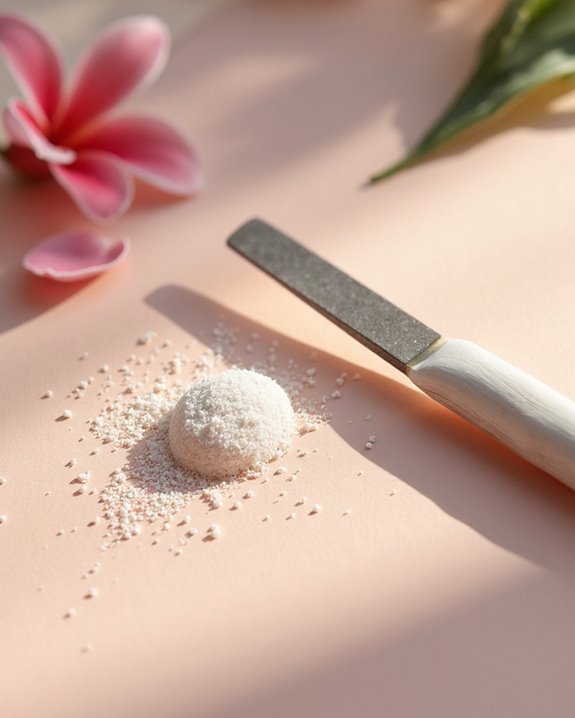
Manual filing represents the traditional approach to nail care that many professional manicurists still prefer for its safety and control. This method allows technicians to use a light touch while shaping nails to their desired shape without causing excessive thinning of the natural nail plate. Nail files with higher grit numbers (180-240) help prevent damage to delicate nails and should always be used on thin or brittle nail beds.
While more time-consuming than electric alternatives, hand filing offers precise control and minimizes heat buildup that can cause discomfort or damage. Professionals definitely use manual techniques for clients with compromised nail integrity, as the gentle, controlled strokes maintain nail health while still achieving professional results. This traditional approach remains valuable in modern nail care, particularly when nail protection takes priority over speed.
Cost Comparison: Nail Drills vs. Traditional Tools
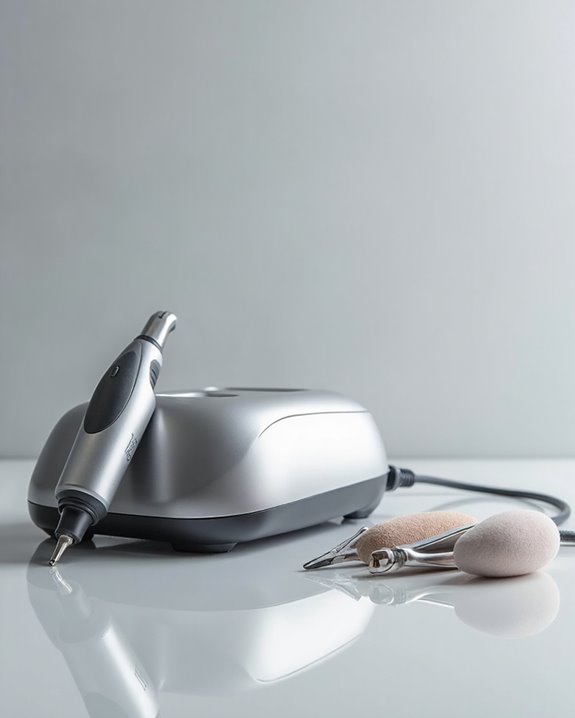
Many nail care enthusiasts face an important financial decision when choosing between electric nail drills and traditional manual tools for their manicure routines. When examining the need for an Electric Nail drill versus manual files, initial costs often favor traditional tools, though this doesn’t tell the complete story. Budget-friendly options like the MelodySusie Portable make using nail drills at home more accessible than ever, eliminating the hard work associated with manual filing. While professional-grade devices like the Kiara Sky Beyond Pro require higher investment, they keep the drill bits properly sanitized when used to clean under nails. Traditional files, while inexpensive individually, must be replaced regularly or professionally cleaned to maintain hygiene, potentially increasing long-term costs despite their lower entry price.
Learning Curve: Mastering Proper Nail Drill Technique
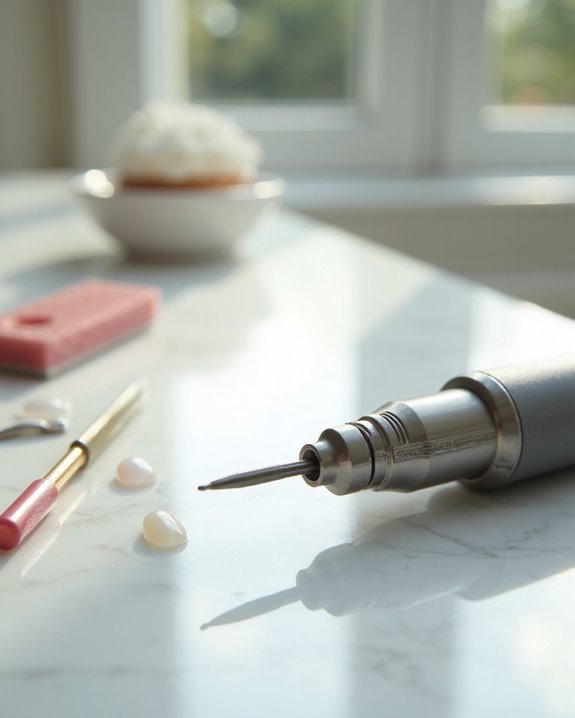
While cost considerations factor greatly in the decision-making process, the technical skill required to operate a nail drill represents another important aspect to evaluate. Mastering the proper use requires dedicated training to control speed and pressure, as opponents claim improper technique can damage the Ideal Nail bed. Beginners should start at lower RPM settings (7,000-15,000) and avoid lingering in one spot, keeping the bit moving in gentle, circular motions to clean underneath without overheating.
Technicians Need to Know how to select appropriate bits for specific tasks and use a dust collection system to minimize inhalation risks. Many professionals recommend manufacturer training before operation, with some salons requiring proof of proper training—especially when used alongside UV Light systems. The learning investment ultimately guarantees safe, effective results.
Who Should Invest in a Nail Drill and Who Can Skip It
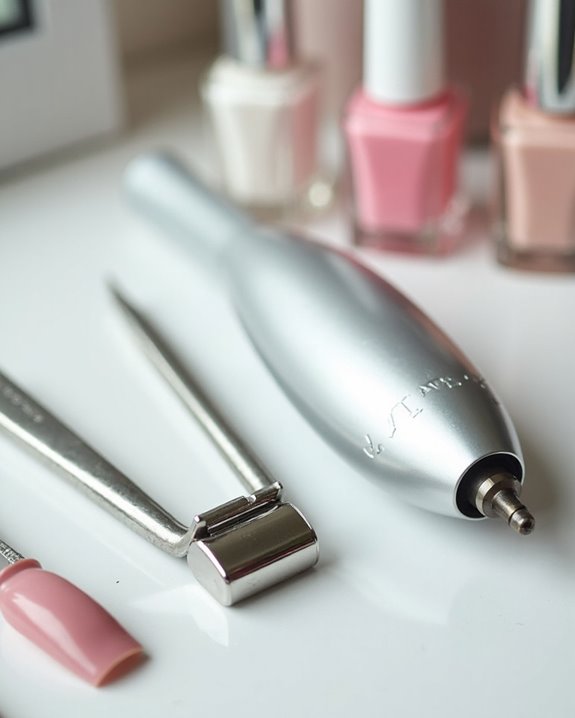
When deciding whether to purchase a nail drill, individuals must consider their specific nail care needs, professional status, and technical requirements. Professionals working with acrylics or gel nails benefit greatly from nail drills, saving 15-30 minutes per sculptured set while achieving precise shaping and efficient product removal.
DIY enthusiasts seeking salon-quality results should invest in reliable models like the MelodySusie, which offers excellent precision for buffing and smoothing enhanced nails. Clients with arthritis may also benefit from the reduced manual effort required compared to traditional methods.
Conversely, those with natural, thin, or brittle nails should avoid nail drills and stick with hand filing, which provides better control and reduces damage risks. Beginners performing basic manicures on healthy natural nails can also skip this investment, as traditional filing techniques offer sufficient results.
Frequently Asked Questions
Do I Really Need a Nail Drill?
Individuals can perform home manicures effectively with manual tools. While nail drills offer speed benefits, they involve a learning curve. Budget options exist for those interested in trendy gadgets, but additional accessory needs and ease of use vary.
What Are the Cons of Nail Drills?
Nearly 70% of nail technicians report health issues from drill usage. Nail drills present numerous drawbacks: high noise levels, significant cost implications, regular maintenance needs, steep skill barriers, limited portability, storage challenges, rapid battery drain, and extensive cleaning demands.
Do You Need a Drill to Do Gel Nails at Home?
A drill isn’t essential for at-home gel nails. Beginners can rely on manual methods and proper prep techniques. DIY tips suggest focusing on tool selection, lamp curing, and exploring gel alternatives while mastering basic color options first.
Do Drills Damage Nails?
Nail drills can cause drill damage including nail thinning and cuticle harm when improperly used. Infection chances increase with tool overuse. Speed risks and bit effects contribute to damage, but proper prevention strategies minimize these concerns.


